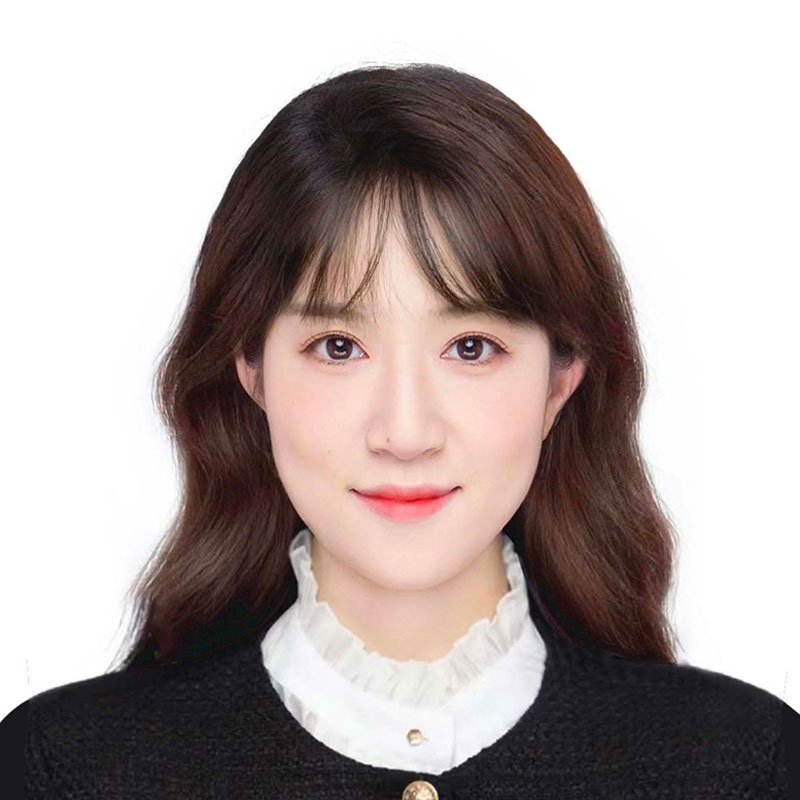 Digital Leadership Summit
Digital Leadership Summit
-
 Xu Mengmeng
Porsche Digital Technologies
Head of User Experience Design
Xu Mengmeng
Porsche Digital Technologies
Head of User Experience Design
Head of User Experience Design at Porsche Digital Technologies, specialising in experience design. Graduated from Tsinghua University, has worked in China Literature, Tencent, Microsoft, Alibaba. 2021 Guanghua Longteng Award China Service Design Industry Ten Outstanding young people, selected in the 17th China Design Young 100 list.
Design concept: Driven by Dreams.
-
 Dong Kai
Midea Building Technology Research Institute
Head of User Experience Research Center
Dong Kai
Midea Building Technology Research Institute
Head of User Experience Research Center
Working in the field of user experience research for 12 years, she has 10 years of rich experience in the C-end user experience research in Tencent and JD.com. Currently, she is engaged in the user experience research in the field of B-end digital building technology in the Building Technology Research Institute of Midea Building Technology Division.
At present, in the smart building industry, we are committed to using the power of design to improve energy efficiency for enterprises and buildings, and helping global low-carbon environmental protection. She has won a number of international awards such as Red Dot, iF, IDEA, ixDC and Midea Group technology awards.
-
 Liu Yong
Alibaba
Senior Experience Design Expert
Liu Yong
Alibaba
Senior Experience Design Expert
In 2011, I served in the design and optimization of full-link product experience of e-commerce and foreign trade business, completed the CrateD construction of foreign trade design system with the team, and committed to continuously polishing and improving the service experience of toB foreign trade products. With 12 years of experience design experience in e-commerce & foreign trade system platform, he joined Alibaba ICBU Design Department in 2014, and is committed to practice and drive the experience design of cross-border e-commerce transaction performance full-link product, toB customer experience monitoring and experience measurement, and design system construction. Focus on the experience design innovation in the foreign trade digital-real integration scenario, carry out innovation for various digital collaborative platforms of industry ecology, and improve the efficiency and empowerment of industrial Internet.
Design concept: Experience design reconstruction based on system engineering.
-
 Ray Rao
Tencent SSV
Xiaohonghua Design Director
Ray Rao
Tencent SSV
Xiaohonghua Design Director
He has a master's degree in East China University of Science and Technology Industrial Design. He joined Tencent in 2011 as director of the SSV Xiaohonghua Design in Tencent, director of Design & branding at the CDC, and an expert designer. He has led the company-level design center, government services, Internet financialinsurance, Smart Travel, convention and exhibition, Experience Design and brand building for brand image renewal in Tencent, and participated in the design of QQ, Q + , soso and other successful internet products. He hopes to share the design experience of different industries, so that more design practitioners can follow.
-
 Chen Xi
OPPO
ColorOS Design Director
Chen Xi
OPPO
ColorOS Design Director
He is head of user experience design for OPPO software engineering and director of ColorOS software design, responsible for experience building for the ColorOS operating system, rich experience in innovative experience design, design engineering practice, experience organization and management, with 15 years experience in the field of operating systems and user experience. His team provides leading software experience design solutions, builds design framework and platform specifications, and promotes product competitiveness and organizational design effectiveness. Product Services Oppo, Oneplus and other brands, covering more than 140 countries and regions.
-
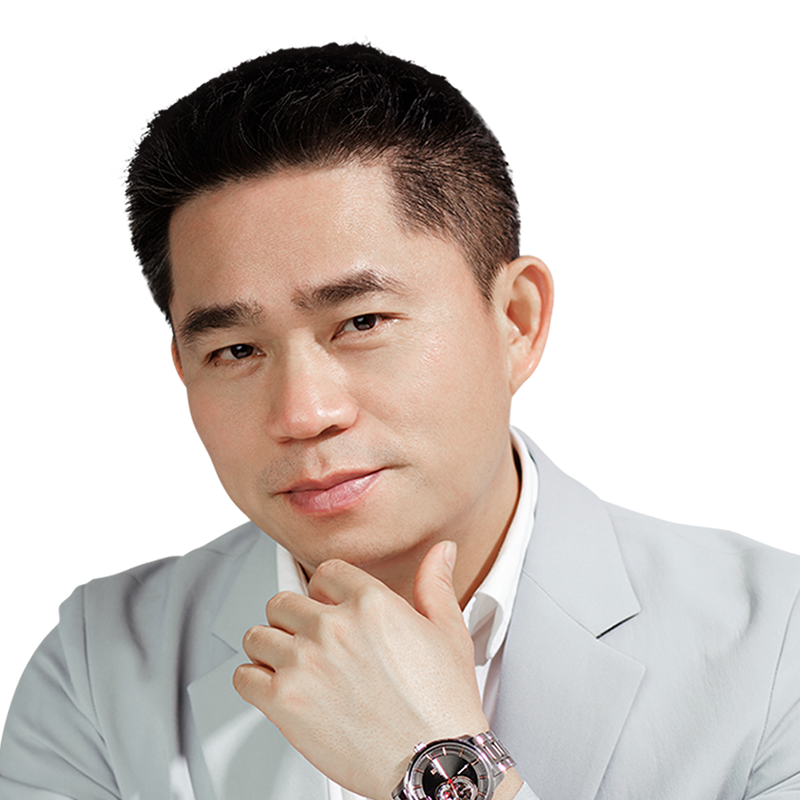
Liang Jun HUAWEI UCD Center Chief Design Director
Responsible for user experience design of Huawei products. Early in the field of CT / it / ICT / cloud, through user centered experience and service innovation design, it helped the communication network to lead the world. Then, in the field of consumer terminal and travel, we continue to drive personal, family, travel and other terminal products to become the king with leading design. Liang Jun's cross domain overall experience planning and design across the end / management / cloud / service has made outstanding contributions to the development of information technology and helping people live a better life, and witnessed the vicissitudes of information society transformation. He has won the individual and team gold medal of Huawei for many times.
Digital Innovation Creates a New Pattern of Global Experience Economy
With the rapid development of Internet, big data, artificial intelligence and other technologies, digitization has become a key driving force for transformation and upgrading of all walks of life. More and more enterprises and individuals begin to realize the importance of digital, and actively explore the application of digital technology in their own business.
Through digital innovation, consumers can enjoy a more personalized, customized shopping experience; enterprises can achieve digital transformation, improve work efficiency and management level; The global experience economy can achieve international development and provide more choices and convenience for consumers.
In this digital leadership summit, we have invited many excellent designers and experts and scholars from all over the world to analyze the status quo of the industry by sharing project cases of various enterprises, this paper discusses the impact of digital transformation on the development of enterprise innovation. To help participants better understand the latest trends and development trends of the digital industry, to jointly explore new trends and new opportunities for the development of the digital economy, and to promote the healthy and rapid development of the digital economy.
-
Speech 1:《Back to the Essence of Design: Exploring How Designs Drive Organizational Transformation》
Speaker:Xu Mengmeng ( Porsche Digital Technologies,Head of User Experience Design)
In the automotive industry, user experience design standards have been a blank. Some designers only consider pure Internet thinking, while others only focus on the thinking of car companies and traditional design methods. This has led to the emergence of many different design styles and concepts, and a hundred schools of thought contend. At the same time, with more and more new players entering the field, each car company has its own unique characteristics and innovations. Therefore, in this diversified environment, how to safeguard design quality and high coordination within the team has become an important issue.
The keynote speaker will combine the practical experience of the Porsche China product design team to bring some new ideas on design leadership to the participants and jointly promote the development of the automotive industry.
Presentation Content:
1. Complexity of automotive user experience
1.1 Challenges of software-defined cars
1.2 New needs of constantly refreshing consumer travel experience
2. How to build a design culture system that fits brand tonality
2.1 Defending Brand tonality: Building a design system
2.2 Unified Weights and Measures: Establish a design metrics system
2.3 Build Continuous Excellence: Derive Customer Journey Analysis Tools
2.4 Continuously validate and discover: Shape the value of user research
3. Build a highly collaborative design team and stimulate the potential of the team
3.1 Refining and precipitation methodology in the review, development is the first priority
3.2 Clarifying gray cognition on specific events and establishing perceptual consensus
3.3 Maintaining organizational self-renewal and continuously moving towards the path of growth
Work Case-
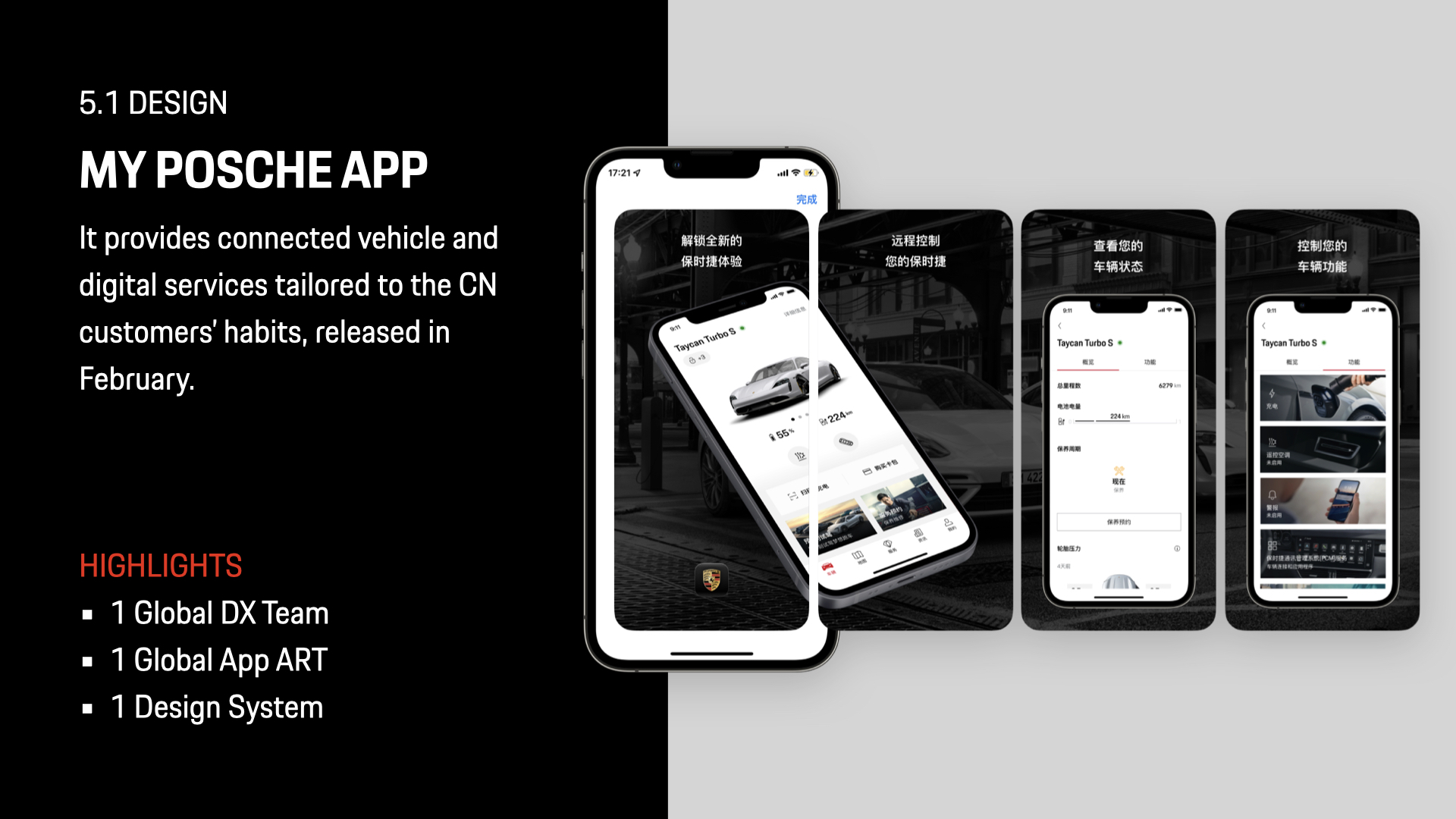 My Porsche App
My Porsche App
-
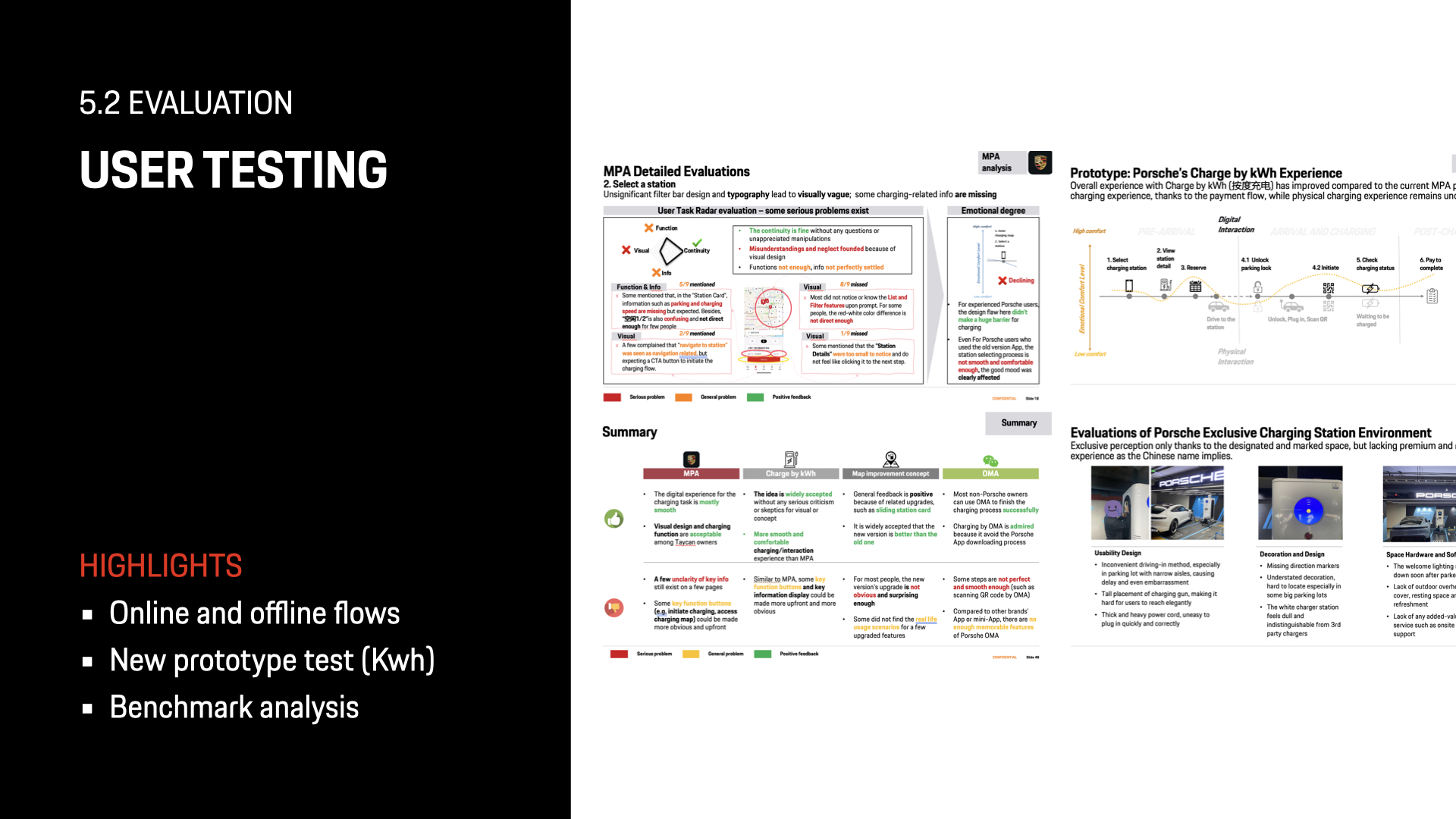 User Testing
User Testing
-
 Innovation
Innovation
-
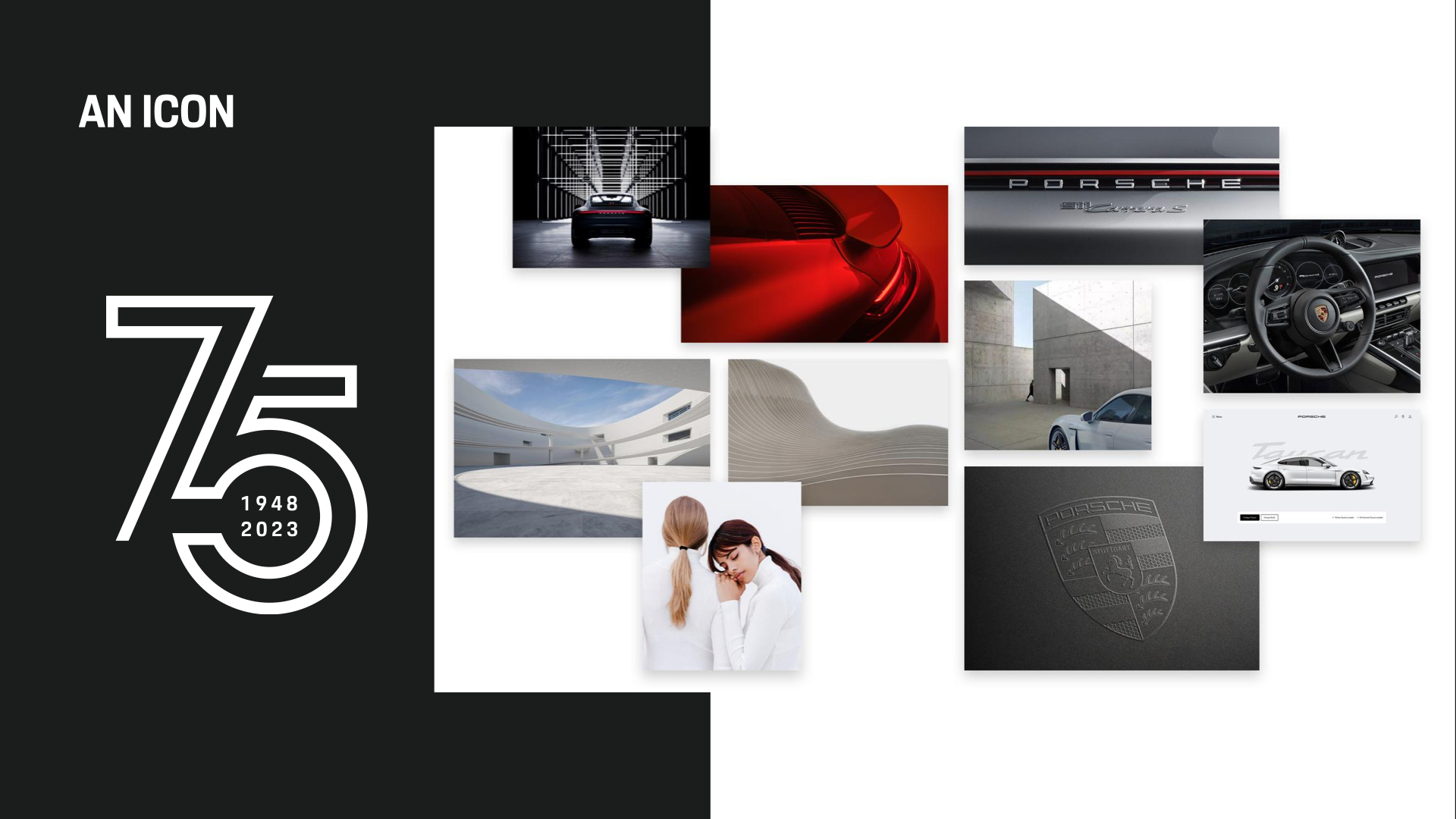 One UI
One UI
-
-
Speech 2:《Design Practice of Experience Innovation about Building Digitalization》
Speaker:Dong Kai ( Midea Building Technology Research Institute,Head of User Experience Research Center)
Midea Building Technology people-oriented, through efficient experience to drive industrial digital transformation and upgrading, to help enterprises improve the level of digital operation management, to achieve cost reduction and efficiency. Under the national "double carbon" goal, by creating a smart carbon management system and a smart energy management system, we can help enterprises gain a comprehensive insight into the key indicators of carbon management, achieve energy optimization control, and promote green and low-carbon development in the building field.
This speech will explain the actual landing cases of Midea Building Technology, share how to use digital experience design to help the development of dual-carbon strategy in the field of building technology, as well as the development trend, importance and realization of user experience design in the building technology industry.
Work Case-
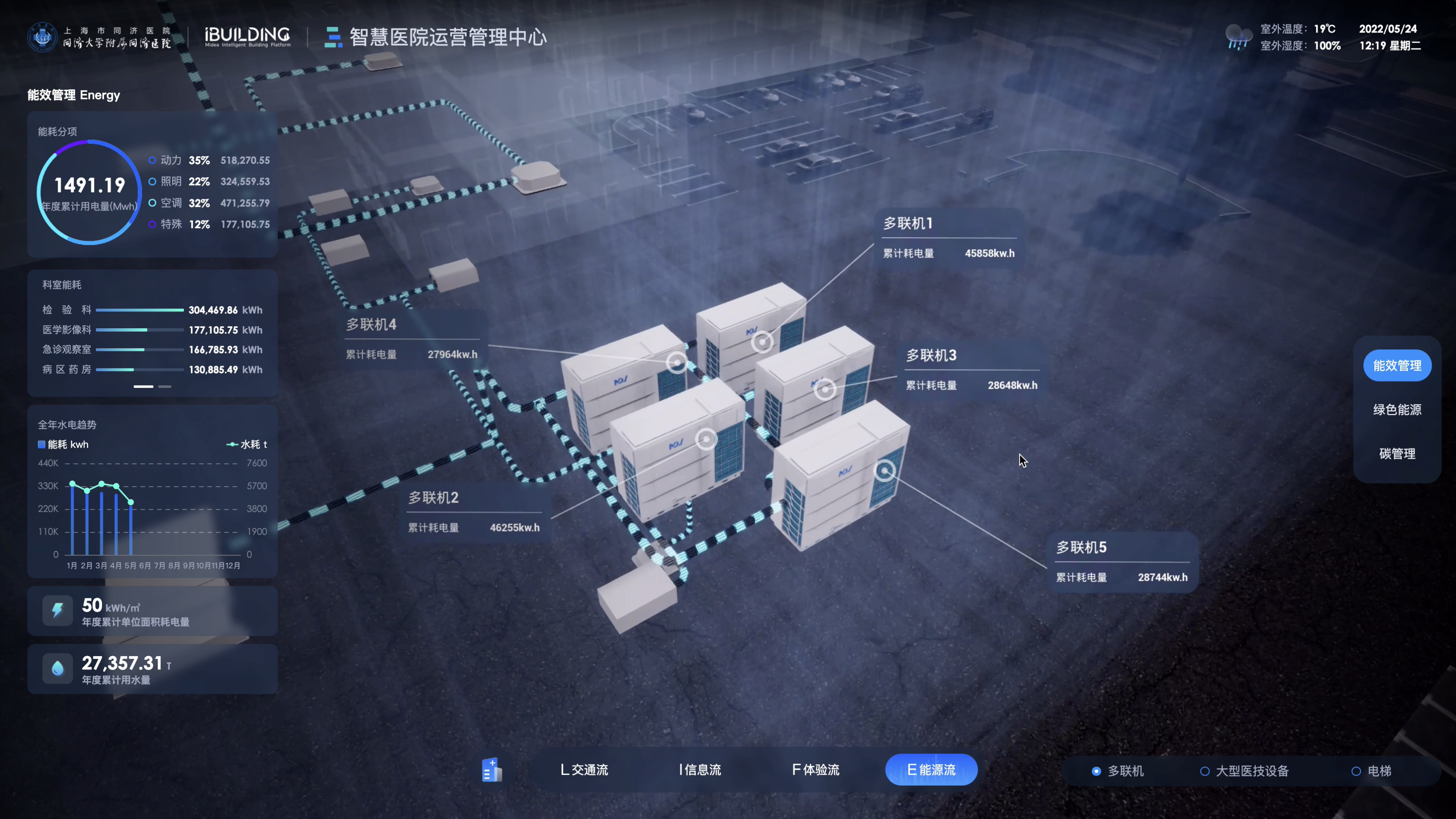 Midea iBUILDING Tongji Hospital Smart Hospital Operation Management System
Midea iBUILDING Tongji Hospital Smart Hospital Operation Management System
-
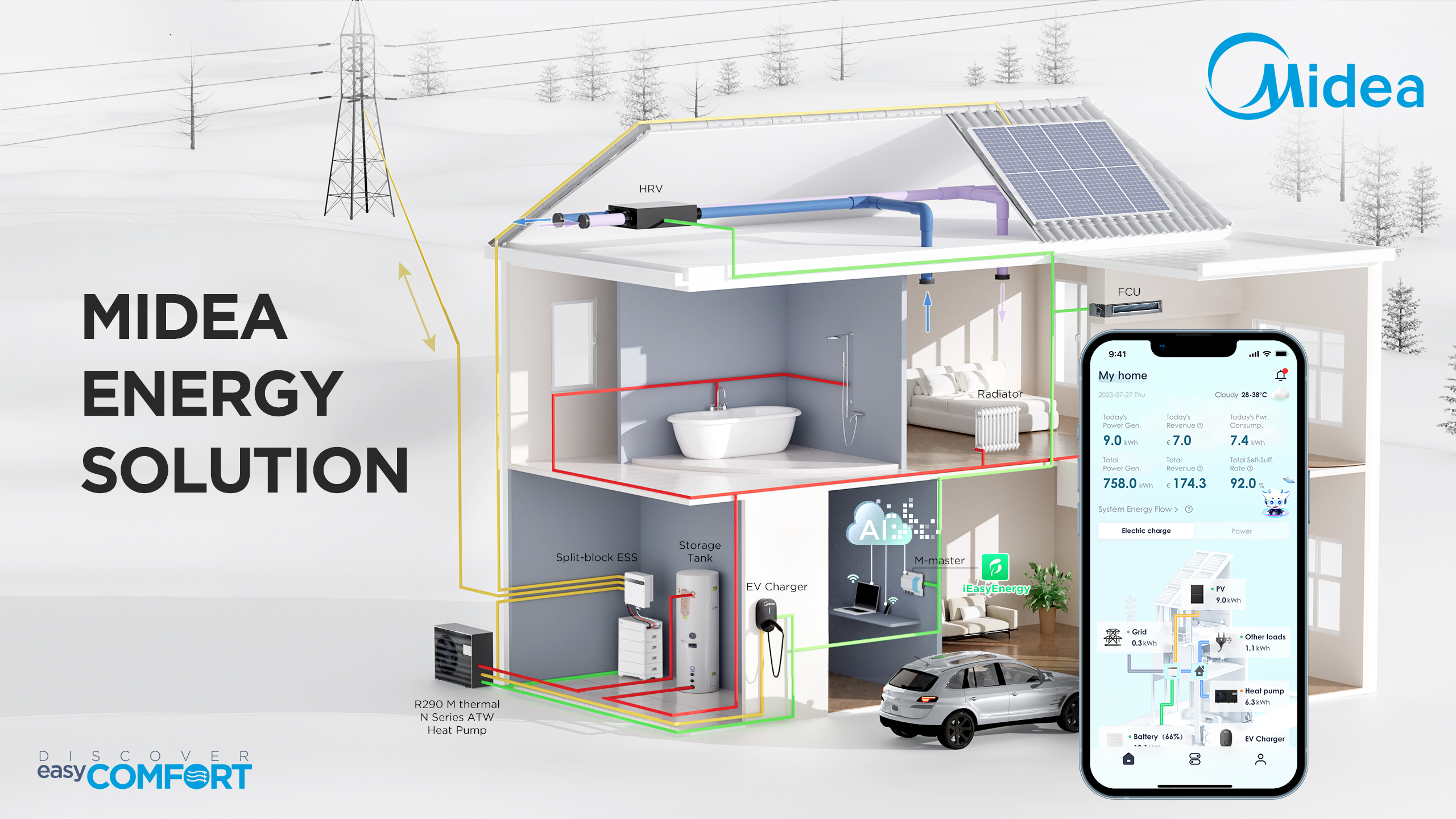 Midea - iEasyEnergy APP Optical Thermal Storage Soft Cloud Intelligent Control System
Midea - iEasyEnergy APP Optical Thermal Storage Soft Cloud Intelligent Control System
-
 Midea iLINVOL elevator pre-sales sales tool
Midea iLINVOL elevator pre-sales sales tool
-
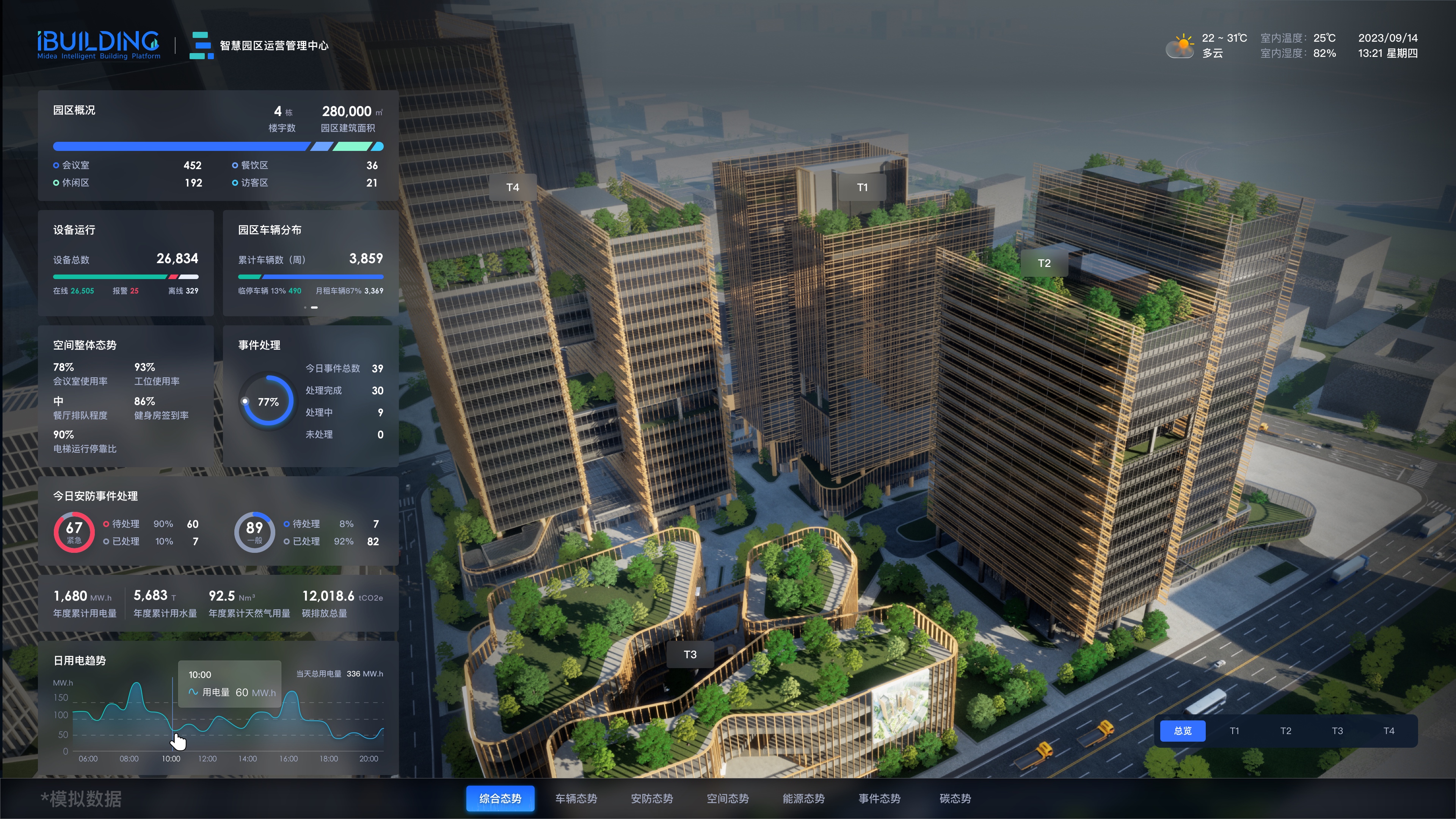 Midea iBUILDING Smart Park Operation Management System
Midea iBUILDING Smart Park Operation Management System
-
-
Speech 3:《The Tao and Art of Cross-border Digital Experience Design》
Speaker:Liu Yong ( Alibaba,Senior Experience Design Expert)
The design of cross-border e-commerce needs to comprehensively consider the cultural background, user habits and market competition environment of different countries and regions to improve the user experience and business value of cross-border e-commerce platforms. This workshop will participate in solving cross-border and international scenarios and user pain points by simulating merchant/buyer scenarios in a "script" setting way. It helps participants broaden their understanding of cross-border e-commerce complex link design and deeply understand the underlying logic of B-side business multi-role complex link experience design. Through the simulation of the merchant/buyer scenario in cross-border e-commerce, the core introduces and gives a speech on the flow line of key cross-border transactions, defines the corresponding cross-border and international scenes and user pain point propositions in the way of "script" setting, and conducts interactive Demo design in the way of script task simulation for the three core scenes (customs declaration, delivery, and documentary). It helps participants broaden their understanding of the design of complex links in cross-border e-commerce, and enables audiences to better understand and master the experience design strategies and models in cross-border e-commerce.
In this workshop, participants will learn the characteristics of cross-border e-commerce landscape link, how to be responsible for the experience design of the link moving line, conduct cross-scenario drills for merchants and buyers, and understand the key points of the scheme design of complex processes through the Demo design of three core links, and deeply understand the underlying logic of the multi-role complex link experience design of B-end business.
The core content focuses on four parts:
1、Script story presentation and foreign trade scene introduction
· A cross-border procurement story was introduced to three scenarios, explaining foreign trade scenarios, roles and experience characteristics, proposing strategies for research, experience and monitoring, making a global introduction, and introducing three scenarios and roles
1.1 Overseas buyer transaction scenario
1.2 Logistics scenario of domestic merchants
1.3 Domestic Service Declaration Scenario
2、Perform script reading and simulation based on the above story scenes
· They were grouped according to seats, and then selected scripts for script reading and simulation practice, and completed the practice of research, design and output
2.1 Overseas buyer transaction scenario (transaction follow-up) simulated sales and merchant research
2.2 Domestic business logistics scenario (logistics delivery) simulation play the boss and operator research
2.3 Domestic service customs declaration scenario (goods customs declaration) simulation play the boss and customs declaration investigation
3、Output research reports and carry out program design
· Focus on learning scheme design based on research and mining, and practice SDB model (role, behavior and data) through role introduction, process innovation and effect verification
3.1 Trading copy script
· Designed an interface scheme for real-time and efficient information tracking between buyers and sellers
3.2 Logistics delivery script
· Design an interface scheme that can achieve delivery efficiency through collaborative node aggregation
3.3 Forwarder customs declaration script
· Designed the interface scheme that can complete the whole process of customs declaration by one person
4、Each group of program verification and review communication
· Each group explained and introduced the scheme in turn, and conducted verification self-check and review based on the method model and monitoring guidance given in the script
4.1 The model based on data elements, role characteristics and behavior habits shall be verified by research
4.2 Self-evaluation of the effect is carried out based on acceptance, completion, expense and tolerance
4.3 Show the solution through quick explanation and introduction, and complete the evaluation among the groups
Work Case-
 Liu Yong - Crated Design System
Liu Yong - Crated Design System
-
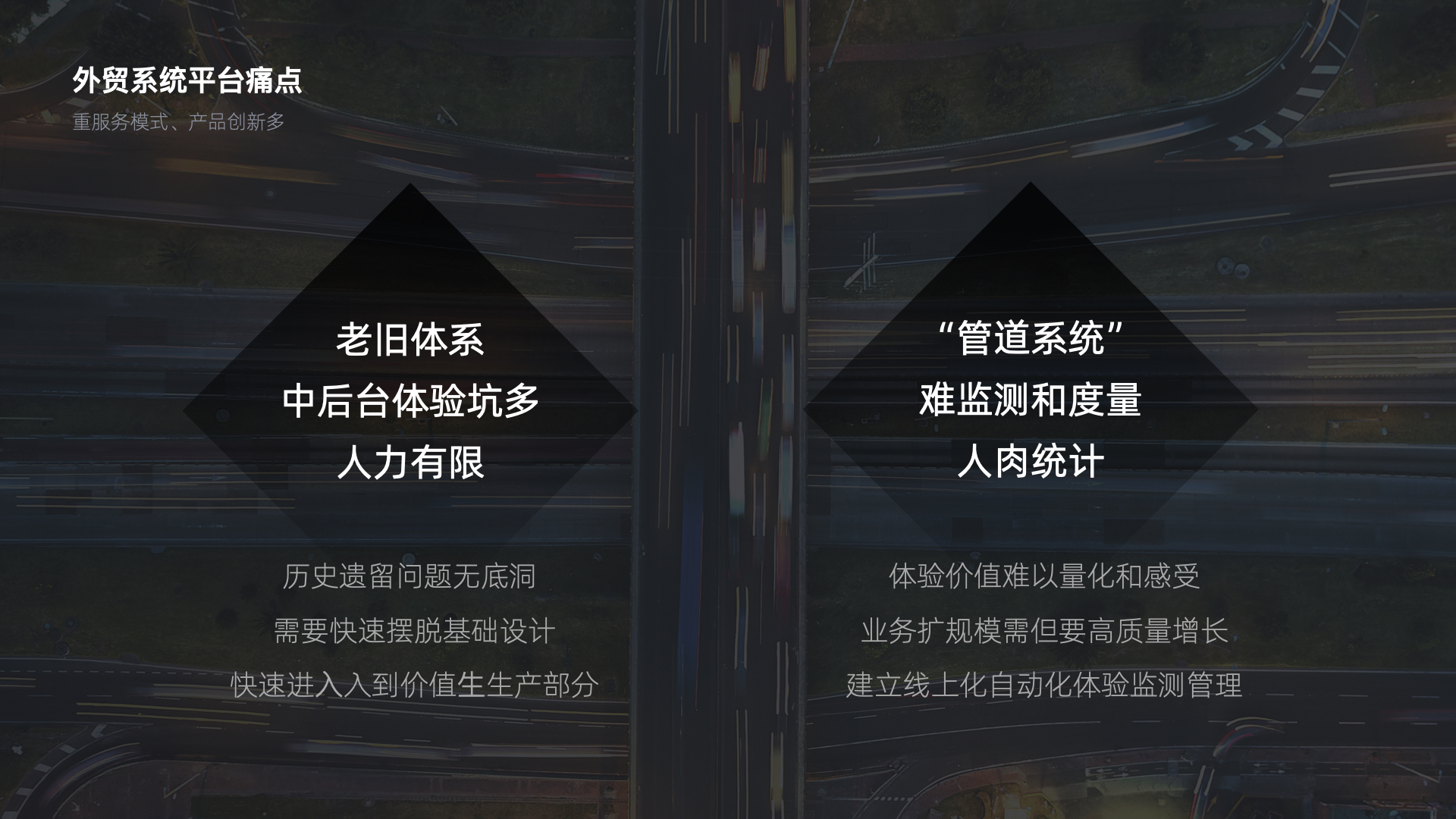 Pain points of foreign trade system platform
Pain points of foreign trade system platform
-
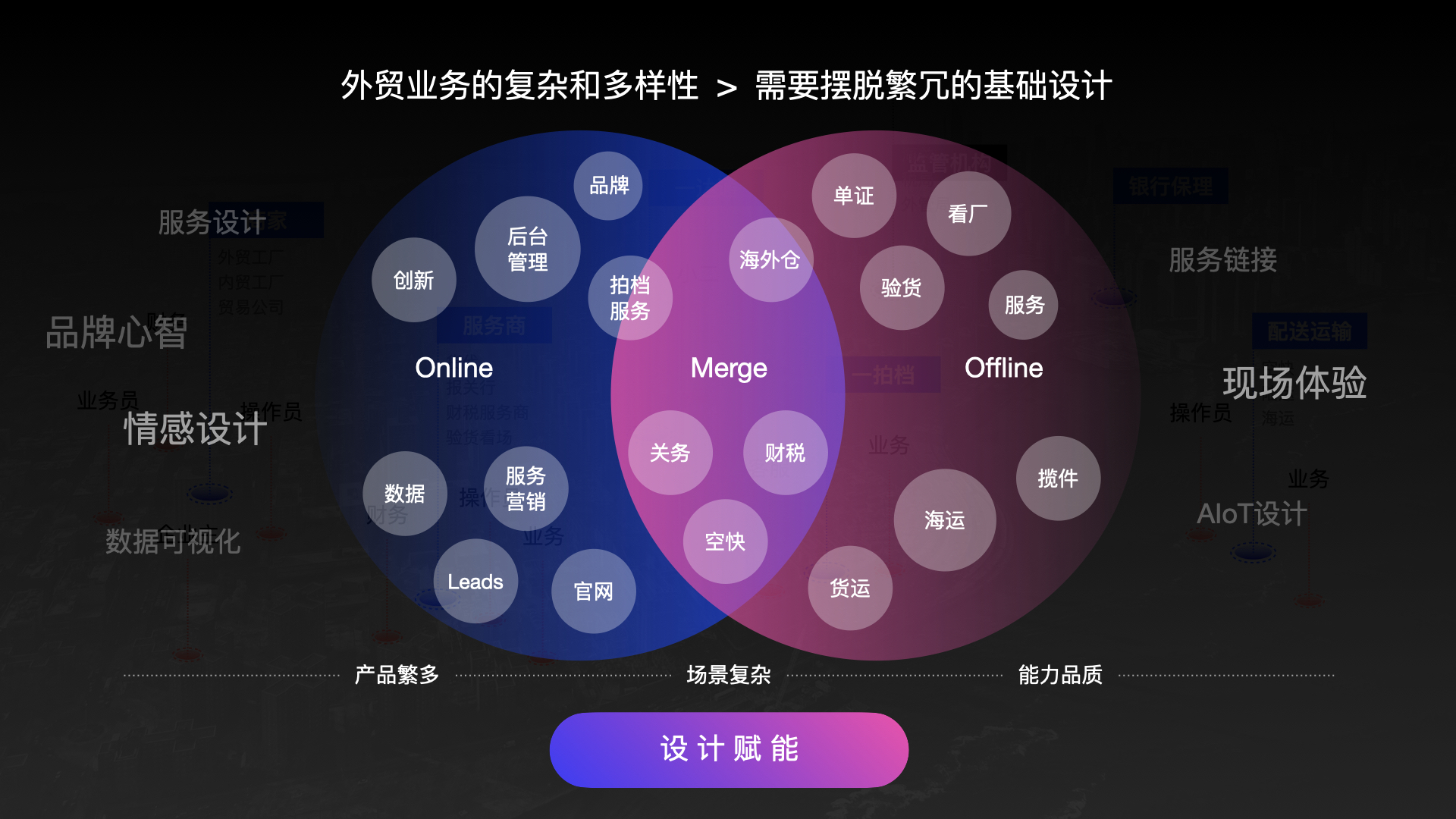 The complexity and diversity of foreign trade business
The complexity and diversity of foreign trade business
-
 The role of foreign trade ecology
The role of foreign trade ecology
-
-
Speech 4:《The Public Welfare Digitization, Provides the Multi-dimensional Plan for the Social Issue Solution》
Speaker:Ray Rao ( Tencent SSV,Xiaohonghua Design Director)
In today's society, digital technology has penetrated into various fields, bringing great convenience to people's lives. In the field of public welfare, Tencent technology public welfare is planning technology public welfare projects with design thinking through technological innovation, building technology public welfare base, applying technology to more scenarios to solve social problems and create social value, and expanding the space for science and technology to improve.
1. Planning technology public welfare with design thinking
Design thinking is an innovative way of thinking, which emphasizes looking for the best solution to the problem through the steps of observation, understanding, analysis and creativity from the needs of users. Tencent Technology Public welfare team draws on the methodology of design thinking and applies it to the planning and implementation of technology public welfare
2. Build a technical public welfare base
In order to apply technology to more scenarios to solve social problems and create social value, Tencent's technology public welfare team has built a technology public welfare base. The base consists of a series of technical components and tools to provide a full range of technical support and services for public welfare organizations
3. Expand the space for science and technology to be good
Through technological innovation and application, the Tencent technology public welfare team has expanded the concept of science and technology to more fields and scenarios
Work Case-
 Ray Rao - Cultural protection field - Digital Great Wall
Ray Rao - Cultural protection field - Digital Great Wall
-
 Ray Rao - The field of mental health - Focus Action
Ray Rao - The field of mental health - Focus Action
-
 Ray Rao - Animal protection field - bird projects
Ray Rao - Animal protection field - bird projects
-
 Ray Rao - Animal protection field - Snow Leopard project
Ray Rao - Animal protection field - Snow Leopard project
-
-
Speech 5:《Industrial Design Practice for Large-scale Complex Systems》
Speaker:Chen Xi ( OPPO,ColorOS Design Director)
As the mobile phone market changes, from an incremental market to a stock market, the competition becomes more and more intense. In this context, the user experience of mobile operating system is facing unprecedented challenges. Especially in the field of software design, there is a lack of effective practices and tools, which makes it more difficult to respond to market changes and continuously meet user needs. In order to meet these challenges, we need to build up-to-date responses. By establishing a comprehensive design system that integrates design values, design engineering and design management, we can provide new ideas for experiencing sustained and steady growth.
1. "Design values" is the core of establishing a comprehensive design system
1.1 Design philosophy: the general guidance of product design
1.2 Design concept: Common propositions across products and businesses
1.3 Design principles: Decision guidance for business design direction
1.4 Design Guide: Specific guidance for design within the business domain
1.5 Design specifications: design and implementation requirements for specific businesses
2. "Design engineering" is an important support for the overall design system
2.1 Prototype and verification: Design value verification determines resource investment
2.2 Measurement and evaluation: Measurable and iterative product experience
2.3 Standards and Delivery: Upstream and downstream delivery based on production links
2.4 Platform and tools: unified asset library and visual development and debugging
3. "Design management" is the leading force of the overall design system
3.1 Design resource management: visual resource Kanban, clear design investment and liabilities
3.2 Design strategy management: directly market-oriented design strategy formulation
3.3 Cultural management: the pursuit of excellence in product design culture
3.4 Organization and Talent management: Sustainable supply and development of talent
Work Case-
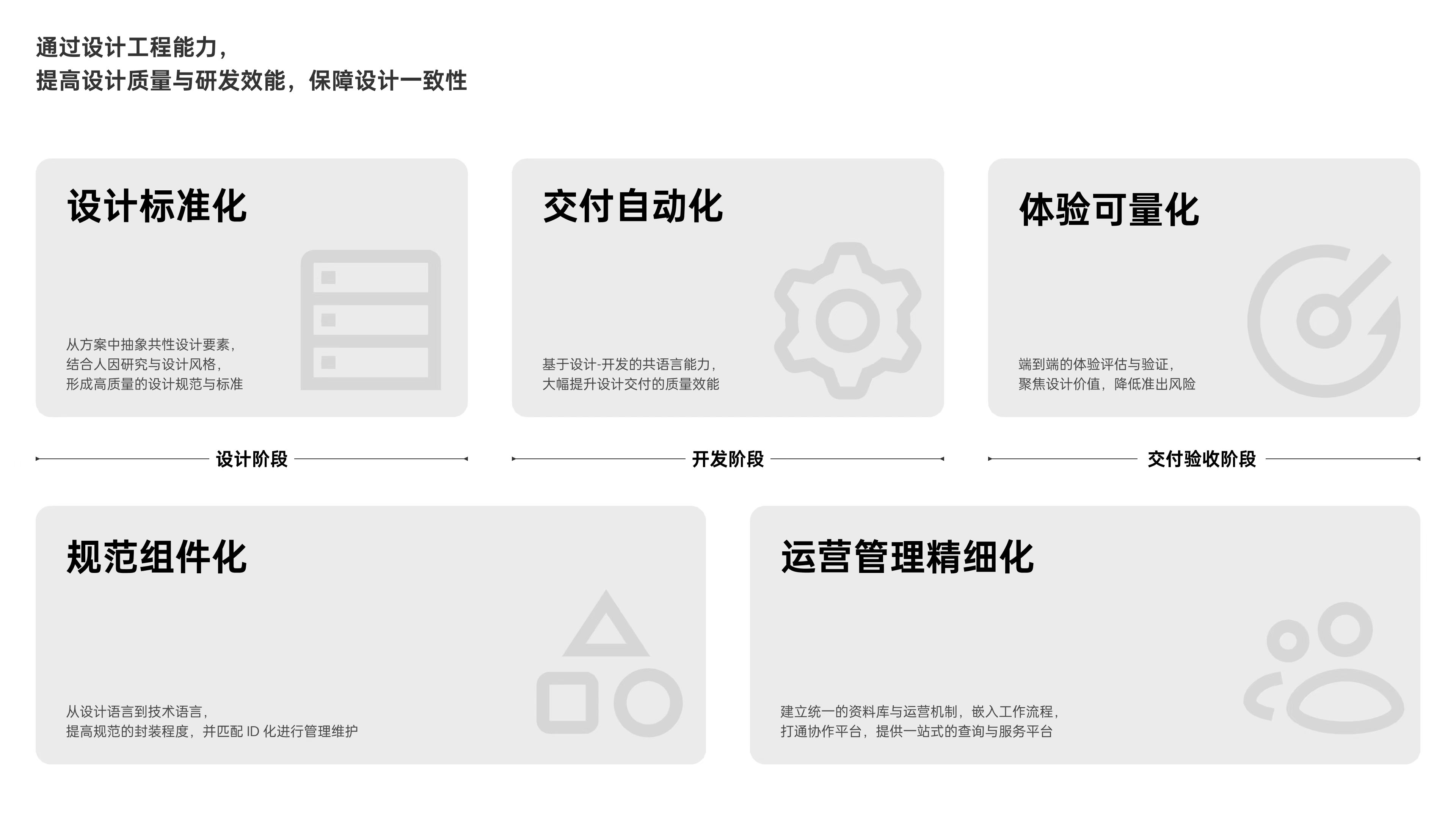 Design Engineering
Design Engineering
-
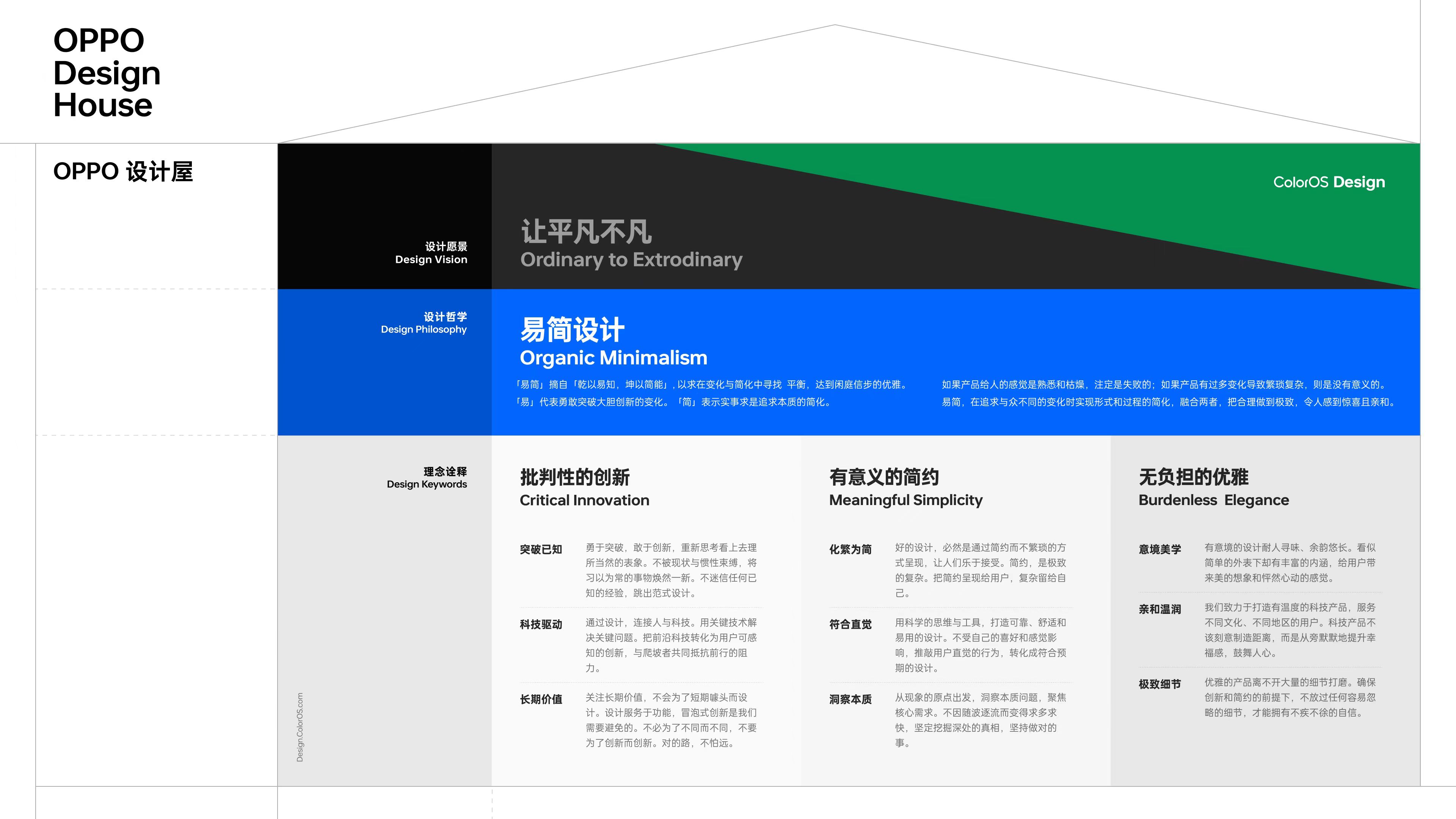 OPPO Design House
OPPO Design House
-
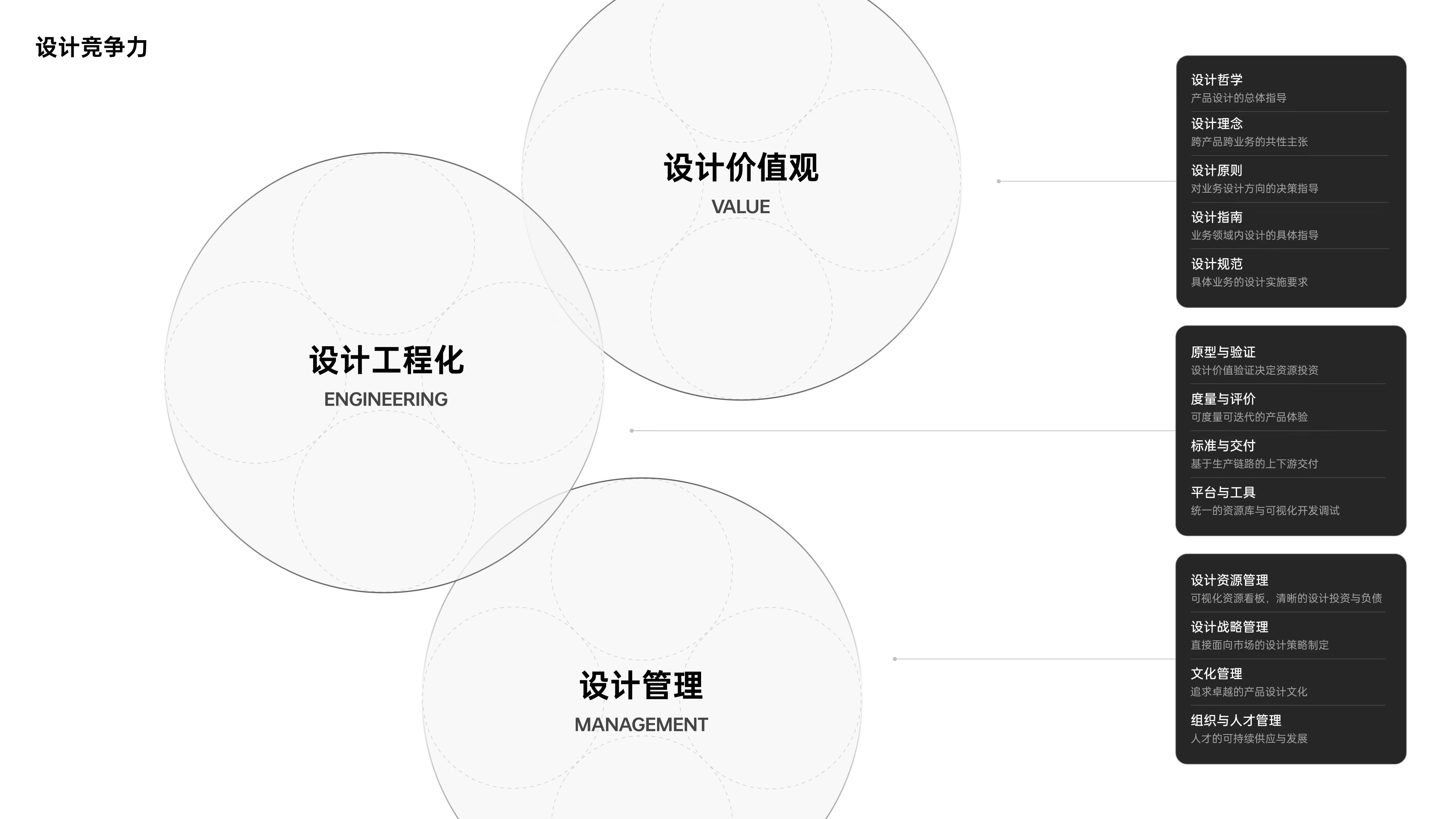 Design competitiveness
Design competitiveness
-
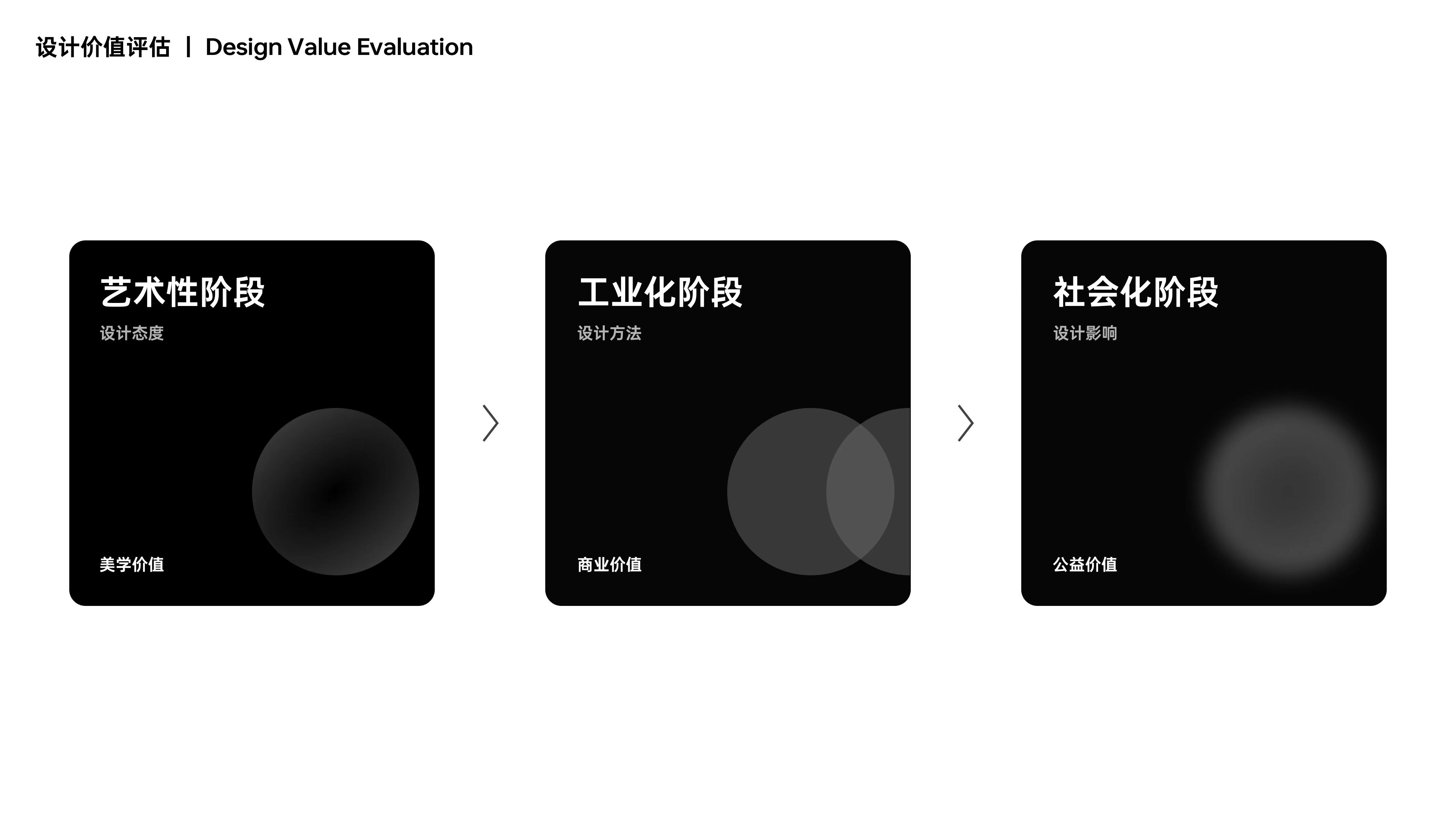 Design Value Evaluation
Design Value Evaluation
-
1. User Experience Designers
2. Practitioners who are interested in the development of cutting-edge design tools
3. Leaders and participants in enterprise digital transformation
1. Understanding experience design trends in an intelligent age
2. Understanding real design cases, design processes, design results
3. Understanding how to apply innovative thinking in design, and how to constantly challenge and break through their thinking patterns



